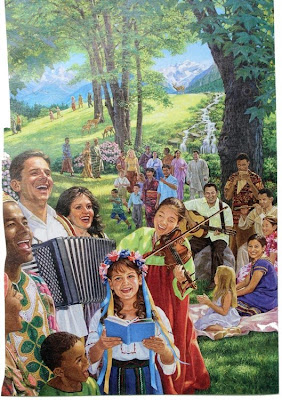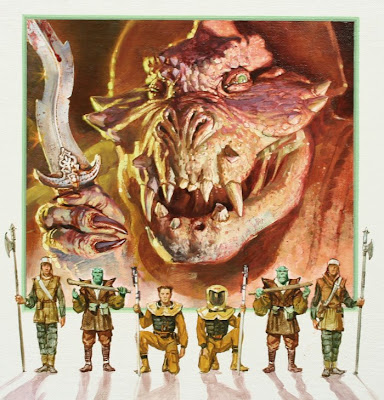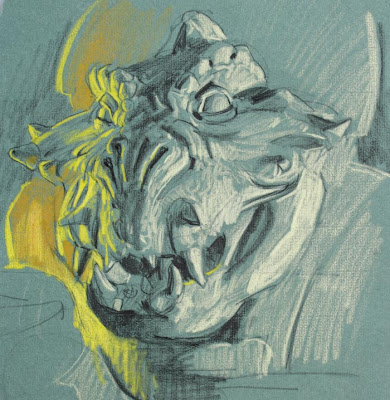I’ve been doing a lousy job with the homework assignment that my
unexpected visitors gave me earlier in the week. They handed me a little book and asked me to read it, but I only spent about five seconds flipping through it, looking for pictures.

Some of those pictures were pretty darn good, at least from a technical standpoint.
It’s nice to see that there are accordions in heaven. But all those happy, smiling people start to get on my nerves, even though I’m a guy who paints utopias!
I thought of a quote from the artist Jean Giraud:
"One is never made only of light or darkness, but both. I believe I have always encouraged artists to express their duality, telling people who know how to show pain, horror and anger in their work to also look for ways of expressing their other face, the angelic face, the face of joy; but also encouraging those who express their inner beauty to accept their other side, their dark side, and express their pain and anger.”
I agree with Mr. Giraud that each of us has to make an effort to develop the opposite side of our vision. My own creation of Dinotopia tends toward the rosy or whimsical side of life—though it does have its share of cheats and scoundrels.
There’s a darker side of me an artist that I have to give voice to once in a while. Back in 1990 I painted a monster for a science fiction paperback called “Total War.”

This is the sanitized version: the original version had a lot more blood dripping down the knife and the jaw. I thought I’d go all out. The art director sent it back and asked me to clean it up a bit.

I sculpted a clay maquette first to really figure out the form, and lit it with separate colored lights. This tone paper sketch was the only form reference I used; I didn’t take photos of the maquette, but used this study instead.
This paperback cover is not a masterpiece. It’s as shallow as a lot of modern art that tries to do nothing more than shock. It’s as one-dimensional as the painting of smiling people with accordions.
In my heart I believe the greatest works of art weave light and dark elements inextricably together. This is the hallmark of the great works by Shakespeare, Beethoven, and Rembrandt. Sublimity is mixed with banality; joy with suffering; kindness with cruelty; beauty with ugliness. That is what our life is like. We are composed of light and clay.
Thanks to
Pharyngula for spotlighting the post on the
unexpected visitors.
 In this set of samples, clockwise from upper left, he has toned the colors with red, blue, green and orange. The addition of a single color to the colors on the palette cuts back on the saturation of all the other colors, the toning color staying the same.
In this set of samples, clockwise from upper left, he has toned the colors with red, blue, green and orange. The addition of a single color to the colors on the palette cuts back on the saturation of all the other colors, the toning color staying the same.
























































